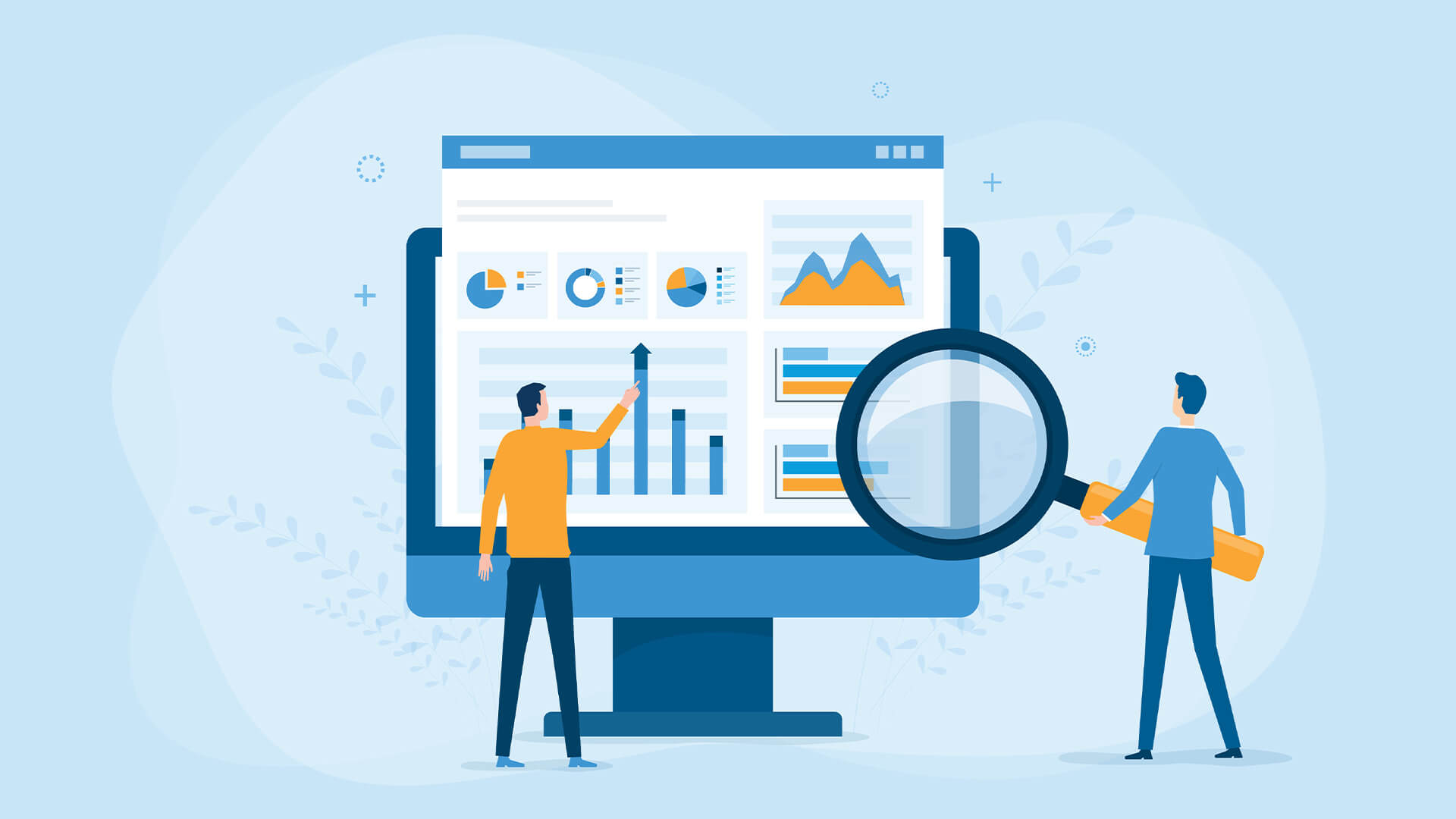Gaining the customer’s attention in a crowded market takes effort. Sustaining that interest is even more difficult. To achieve both, successful marketing strategies need to nurture customer relationships and provide coherent, personalised digital experiences.
Data can be a powerful asset in delivering this.
The Rise of Data-Driven Personalisation
Once businesses started using it, the spread of data-driven marketing became almost inevitable. As larger companies like Amazon or Netflix give consumers marketing content tailored to their individual habits, interests, or needs, consumers began to expect it generally.
Consumer expectations are already high, necessitating the need for a more cohesive single customer view. Numerous surveys have found that consumers increasingly expect marketing communication to be personalised. Marketing of a one-dimensional, one-size-fits-all character risks appearing inconsistent, irrelevant, and annoying.
The digital transformation across society raises the stakes of this challenge. More customers are switching to digital shopping, hopping between multiple devices and platforms. The COVID pandemic accelerated this digitalization. It also nudged many consumers away from their previous shopping habits and brand loyalties.
Personalization has a momentum that looks likely to keep elevating customer expectations in the future. Indeed, already, one survey found that more than half of consumers would stop using brands that didn’t personalise their marketing. With rapid digitalization and looser brand loyalties, the risks and opportunities for businesses are pressing. There is much to play for.
The Marketing Benefits of Data-Driven Personalisation
Imagine a business that has a great product or service to offer consumers. They’ve built their website. They’ve already successfully navigated the app store testing process. That business will take off now, right?
Well, without effective marketing, probably not. Success relies on much more than offering a good product. The entire customer journey is now more complex – and customer expectations higher – than ever before. Customers want a smooth experience throughout (across whatever channels they happen to be using). They want to feel known, remembered, and understood.
Data provides the raw materials of personalisation. How many profiles of different customers are there? What has this customer’s journey been? What marketing content would most assist them? A data-driven marketing approach can help with all these questions and many more.
By using data to understand its customers, a business can target and craft highly appropriate, valuable, timely, and engaging content: effectively personalised marketing. This, in turn, can foster better sentiments towards your brand and happier customers. After all, if you aren’t doing this, another company probably will!
Personalisation Through Data-Driven Marketing
What, then, does a business need to consider if it wants a more data-driven approach to personalisation?
1. Collecting the data
If a business wants to effectively use data to understand its customers, it needs to have high-quality (reliable) data in the first place.
Traditionally, the primary type of data businesses stored about their customers was transactional: records of deals and purchases undertaken. Such information is important, of course. But it gives little else to go on.
Businesses should think about data more broadly. Every interaction with a brand offers opportunities to collect data, contributing to a sharper picture of each customer. What was their brand journey? What marketing input helped them decide to buy? What engaged them most effectively? Did they repurchase? Such contextual data – what happens before and after a transaction – can significantly assist in strategizing.
Third-party data can also be added to the mix to fill in gaps and provide a deeper picture of customers and the market.
Whatever data is collected, the teams should recognise the legal requirements (e.g., GDPR) and the public’s concerns around data privacy. As well as fines, businesses risk immense reputational damage if they fail at data privacy.
A robust commitment to it is needed. Rather than trying to hide the use of data, businesses are best being up-front about how they use it to enhance the consumer’s experience (while respecting their privacy preferences).
2. Storing the data
Next, to be helpful, all that collected data needs to be stored appropriately to allow it to be accessed and analysed.
Historically, business data was locked away in different silos across the business. Merely accessing data from these isolated deposits tended to be an effort. And linking information from various operational wings of the company – to form a more holistic picture of the customer journey – would have been harder still.
So now, these silos need to be broken down: insights about customers will come by linking up and exploring data points from across their journeys. Data from different platforms and business systems will likely be involved in this. Quick and easy cross-business analysis should be possible – to facilitate a prompt response in a competitive market. Delays cost.
It can get hugely complicated. Data storage technology (like other areas) has evolved at a phenomenal rate (e.g., HDFS, data warehouses, data lakes). It has been hard for businesses to keep abreast of developments in a coherent and co-ordinated way.
Fortunately, disparate systems can pull together to enable analysis. For example, data orchestration allows siloed data (e.g., customer data) from multiple storage locations to merge for analysis (note that there will be a different orchestration meaning for other purposes).
Without orchestration, the marketing team may need to go to the owners of the various data silos to request specific data, probably entailing a delay. With data orchestration, the team can access and analyse the data for themselves – removing bottlenecks and streamlining the process.
3. Learning from the data
Managing data appropriately will yield valuable insights. And those insights need careful teasing out.
Segmentation divides a business’s customer base according to commonalities. Marketing can then be crafted for each segment. In the past, segmentation was rooted in demographic details. Comparing sales with social criteria (e.g., age, gender, occupation) has helped businesses propose ‘typical’ customer profiles. Likewise, firmographic segmentation has given B2B firms a sense of their adopters.
Such segmentation has benefits. Demographic data is relatively straightforward to gather and analyse, and the business’s data can be augmented by third-party market information, helping to keep track of social trends and shifts. Plus, segmentation along these criteria has fairly straightforward, actionable implications for sales and marketing efforts.
Yet, used in isolation, such demographic profiling has limits and dangers. It can result in reductive thinking, potentially reducing diverse social groups to simplistic (and unrealistic) stereotypes. When this carries through into marketing efforts, it can backfire and alienate people in that segment with whom those stereotypes jar.
Humans are so much more than their demographic details. Consumer decisions are complicated by beliefs, tastes, values, and psychological traits. Searching for correlation through demographics alone can completely obscure these dynamics and hinder marketing efforts. Demographic profiling alone may give a veneer of personalization but is rather blunt and one-dimensional in reality.
Fortunately, digital advances such as cluster analysis and AI to predict future consumer behaviour can incorporate the psychological dimension. The resulting segments have more coherent, insightful, and accurate profiles. There can also be a development of more nuanced and emotionally intelligent engagement strategies for each segment.
It can also be augmented by tools that track and support each customer’s journey with the brand. Based on their segment profile and journey so far, AI tools can predict the support or recommendations that might take things further. Even deeper personalization can be delivered within the segments at appropriate points.
4. Providing data-driven marketing content
Once segments are identified and defined, the business should address its needs. That’s where content is needed to provide appropriately personalised experiences.
Content segmentation has consequences across all levels and channels of marketing. It may be as broad-brush as having different multilingual versions of your website to meet various demographic needs. It may be more granular, such as having several versions of marketing emails for consumers with different outlooks. Or it may be even more personalised, such as reaching out when a B2B client’s data suggests they need particular support.
The more complicated the segmentation, the more complex the content work required will become. However, if the internal capacity for this is not available, a business could consider engaging external support. For example, performance based marketing can help start-up businesses to increase their reach and exposure to more people.
Embedding Data-Driven Personalisation in the Business Culture
Marketing driven by data-driven personalisation can be powerful. But it’s no easy feat to pull off.
Automation tools can help embed it across many marketing functions. For example, it can do much of the data heavy-lifting involved. But it’s not a solve-all panacea. It can only succeed if set up carefully (e.g., appropriate metrics). And its ultimate impact depends on the quality of the content. Thus, it still needs skilled and knowledgeable teams to oversee and own the workflows.
This illustrates the importance of cultivating data literacy across a business. Teams new to data analysis are likely to need training to answer the myriad questions like ‘what is apache hive?’ A wide range of skills are needed, not just technological but also how to use that data to leverage business advantage.
Unsurprisingly, businesses are rightly prioritising these skills. Indeed, by 2020, a third of businesses already had data literacy training programmes and a further third planned one for the following year.
Moreover, there are broader, cultural implications for organisations. To thrive in a fast-changing, data rich world, businesses need agility. They need to be quick to interpret trends in the data (and thus the market). They need to be swift and smart developing, piloting and rolling-out responses to those insights.
Received wisdom and conventional thinking should be displaced by a willingness to use data to continuously refine and critically test marketing approaches. Businesses that win in the future are likely to be those which do this most effectively and responsively.







